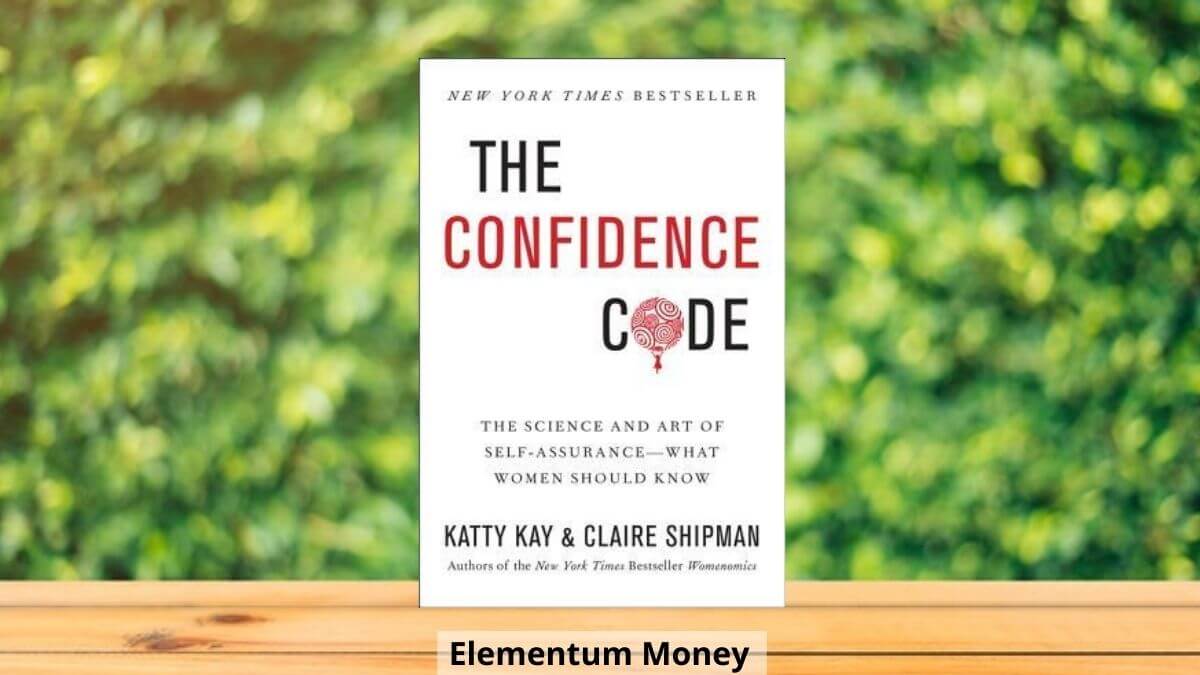Last year, a friend told me to think, research and come up with ideas to promote gender equality at the work place. Prior to this I had mostly brushed the topic under the carpet, comfortable in the view that I have not had to face much of it. As I started digging deeper and checked out books to read up, the one recommendation that commonly popped up was The Confidence Code. That’s one book I was glad I picked up last year. With the depth of it’s findings, it’s also been a bottleneck of sorts in the blog post pipeline. But finally, here is my distilled wisdom from a book that I would highly recommend for any reader, man or woman.
What is Confidence?
Wikipedia defines confidence as “a state of being clear-headed either that a hypothesis or prediction is correct or that a chosen course of action is the best or most effective”. In fact, the term derives itself from the Latin word “fidere” which implies trust.
The book Confidence Code however defines the trait in a far more lofty manner saying:
Confidence is the purity of action produced by a mind free of doubt.
-The Confidence Code, Claire Shipman & Katty Kay
Confidence is a tricky concept to be put into a narrow boxed definition. If I were to define confidence in broader strokes, it is essentially an attitude or a mindset that makes you more certain of yourself, aiding you to take action while reducing the second guessing.
Here’s another way that the book put the term confidence in:
Confidence is life’s enabler—professionally, intellectually, athletically, socially, and even amorously.
-The Confidence Code, Claire Shipman & Katty Kay
As the research in the book concluded, confidence ends up being an even important factor than competence in how we end up faring in life, especially when it comes to careers.
Although it does seem like some people are wired better to be more confident, recent research seems to suggest that brain plasticity means we can mould our confidence metrics also on the basis of our life experiences.
The Four Confidence Cousins
However, confidence really works better in conjunction with what the authors charmingly call the “confidence cousins”, a quartet of attributes often lumped in the same bucket as confidence.
1. Self-Esteem
Self Esteem is the trait of seeing value in yourself and finding yourself lovable. In a nutshell, it’s a state of emotional well-being and being secure in your own self.
2. Optimism
For some time now, it has become a favoured mindset of mine to employ, whereby you assume the outcomes of any event will be positive. I have experienced that life feels much more pleasantly livable when you try to operate with optimism. Also, as the book points out, it is with optimism that you can begin to practice gratitude also much better. When you have a positive bend of mind, you begin noticing the things to be grateful for in life.
3. Self-compassion
This is a trait that sometimes I struggle with but is one of the most important in life, as well as to hone confidence. Confidence leads us to take risks which may or may not work out. When they don’t and we are in the dumps, it is this feeling of self compassion and an ability to be kind to yourself that helps. Ironically, as the book defines it, treat yourself the way you would a friend for there are enough times when we are toughest on ourselves.
4. Self-Efficacy
The book defines self efficacy as a belief in your ability to succeed at something. As the authors point out, it is with a healthy sense of self-efficacy that you will look at challenges as something to be conquered. More importantly, setbacks will not seem like quick sand sucking you in but as walls that you have the ability to scale.
Gender Gap in Confidence Code
One of the biggest findings that the authors put forth is the fact that multiple data points and research show that there is a big gender gap in confidence levels. While men lean towards over confidence (sometimes at the cost of being obnoxious), women lean towards under confidence mostly at great detriment to themselves. Some reasons that have were unearthed in the book were as below:
1. Upbringing
Women and men are brought up very differently and in case that gap is narrowed, those girls are labelled tomboys. So, for the majority, girls are told to be quiet, docile and diligent in their studies. While it works wonders in the education stage, those skills and conditioning proves to be Achilles Heel in the real world. Similarly, the one lesson most women take is the importance of relationships making them more susceptible to inaction in the kind of politics often required to thrive in real-world setups. Likability is another thing drilled into girls while growing up, which means ruffling feathers also doesn’t come easy even if it is for a reason that they are sure of.
2. Brain Structure
This was quite a revealing interesting discovery for me. As per a study, women have most of their brain matter concentrated in the pre frontal cortex or the rational thinking part, plus some in the emotional area of the limbic system. Men have a more spread out distribution of the brain matter. Another study seems to suggest that women have about 30 percent more neurons firing at any point. This balance in the brain matter through the prefrontal cortex and limbic system is what aids the famed female ability to multi-task. However, ironically, this over thinking is also what often leads to rumination and debilitating inaction instead of brushing off the smaller details.
3. Stereotypes
It’s long been shown that stereotypes can easily become self-fulfilling prophecies. For instance, this study is one of the most interesting which shows that the results of the respondents varied according to the identity called out. If they were reminded of the fact that they were Asian they did better on their Math tests whereas recalling their gender, these young women saw a drop in performance. There are enough and more such stereotypes when it comes to women. While a lot of them may not consciously acknowledge them, even an unconscious awareness of it ends up playing it’s role.
4. Double standards
When women try to use confidence measures as they see being used by the men around them, their likability metrics sees a sharp decline. What we need to acknowledge is the fact that confidence looks different for men and women. While for men it might be a table-banging aggressive confrontational brand of confidence, for women it could be a soft, strong sense of assertion. And yes, soft and strong are not necessarily contradictory.
5 steps to crack the confidence code
The good thing about the book is that it is not just a diagnostic but also a prescriptive book. There are research backed suggestions that the authors have packed it with to ensure there is enough value for any reader to absorb.
1. Act act act
If I had to distill this book into a single takeaway it would consist of a three-letter-word – act. Finally, confidence is a means of trusting yourself and having faith that what you do results in a desirable outcome. When you invert this meaning, a lack thereof then means it can lead to a debilitating sense of inaction. As the authors put it so wonderfully:
Confidence occurs when the insidious self-perception that you aren’t able is trumped by the stark reality of your achievements.
-The Confidence Code, Claire Shipman & Katty Kay
2. Fail fast
Action is like a coin, comes with two sides to it. While we all start out with anything only in the hope of success, failure probably acts as a much better teacher. Success is like that recipe turning out perfectly where so many ingredients blend and perform just right. However, with failure the answers are more definitive in what not to do. And as the current buzzword in tech seems to suggest, knowing when to cut your losses and choosing to fail fast sharpens the learning curve. As for the subject on hand, aka confidence, the experience of overcome stumbling blocks reduces the fear of action too. No wonder so often a big chunk of success stories are made of erstwhile failures or challenging phases. If failure still paralyses your ability to take action, simply voice out your fear by asking yourself – what’s the worst that can happen? Most of the times it won’t be that scary.
3. Reframe negative thoughts
Just the other day, while planning a schedule I mentioned to my husband that if X doesn’t work out we need to do this, this and this. He simply said what if it does? While keeping the possibility of failure at the back of the mind is important, it is equally critical not to let it nudge it’s way to centre stage. Here, the potent combination of gratitude and optimism works as a handy cushion.
4. Take responsibility for your decisions
Decision paralysis or the inability to make a choice also signals a lack of confidence. One of my favoured approaches is to list down the pros and cons. Once you take that decision, even if it scares you, tell yourself that whatever comes will be manageable. Be it success of failure, remind yourself that the buck stops with you. For me, this idea of being accountable to yourself was best drilled in by Jack Canfield in his book The Success Principles.
5. Play to your strengths
This, to me, is a more gender specific suggestion. For long, women have absorbed all possible cues, be it from male dominated workplaces or pop culture that confidence has a particular visible code to it. However, it is high time to customize the idea of confidence and work to our strengths. Maybe we can mold it in a way that plays to our strengths of building relationships while being secure in our thought processes and actions.
Confidence is an enigmatic process built in small measures over a lifetime. The book Confidence Code works as a great starting point in attempting to decode it and provide guiding factors to continue honing it. Have you read it? What did you make out of it? Let me know in the comments below.





Leave a Reply